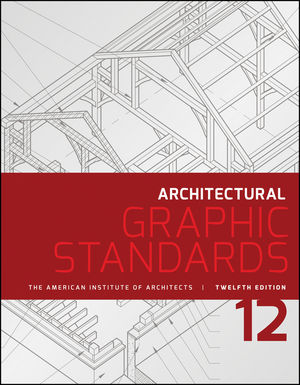Exciting, fluid and functional. This is the language that distinguishes Marco Piva’s architectural creations, product design and interior design. The effort in material research and technology, the value of differentiation, the design innovation, lead the establishment of Studiodada Associates, whose production becomes one of the most representative of the period of Radical Design. Studio Marco Piva opened in the 80s and works on a range of projects from large to architectural interior design, to industrial design. Piva studies and creates design solutions which are pervaded by stylistic freedom and compositional sobriety.
The Studio participated in the design and construction of the innovative complex Next 21 in Japan, and has also designed the Laguna Palace in Mestre, the Port Palace in Monte Carlo, the Hotel Mirage in Kazan, the Una Hotel in Boulogne, the T Hotel in Cagliari, the Move Hotel in Mogliano Veneto and the multifunctional complex Le Terrazze in Treviso. For the Exedra Boscolo Group, Piva created the Suites of Exedra in Rome, the B4 Net Padova Tower and the Tower Hotel in Bologna. In Dubai, Piva designed the Tiara Hotel Oceania Hotel. Currently, he is designing the new complex of the river port of Novosibirsk in Russia.
He is also currently engaged in the construction of a residential complex in Abu Dhabi, an interior project for the Hotel Gallia in Milan, and the construction of prestigious private houses in India. Moreover, he has started a collaboration with the prestigious fashion maison Bulgari, for which he is designing all its store windows worldwide.
W&C Architect: How many years do you have in the profession?
Piva: Now, it is almost 40.
W&C Architect: What is your work history in this field?
Piva: Since I was a child, I used to look at the construction/objects that surrounded me, playing with them and imagining how they could be different. I started drawing before I learned to write. Being an architect was an inner inspiration. When I started my career, in the mid 70s, promoting one-self work was much more difficult than now. There wasn’t internet, just few press, “word of mouth” and public occasions.
What happened, in the early 80s, is that I attended with my partners at Studiodada Associated to an “ideas competition”, organized by “Triennale di Milano” and curated by Alessandro Mendini. Our project—a complex of very detailed drawings, writings and images, won the selection and was proposed for the exhibition. Then I realized my first prototypes and I was contacted by one of the best and most dynamic companies in the furniture sector, which acquired rights to develop it. That was my beginning!
W&C Architect: Where did you go to school?
Piva: I graduated from the Polytechnic of Milan.
W&C Architect: Did you have a specialization?
Piva: Not really, my design work cuts across architecture, interior design and design – a characteristic that is typically Italian. Architecture, design and interior design merge in a synchronous process—the designer becomes the director of a unitary work, assuring continuity and fluidity of language in both stylistic and functional terms.
W&C Architect: Do you approach architecture from an artistic or functional starting point? Are the two concepts exclusive?
Piva: I think that architecture is nothing without functionality. The starting point is to work on the definition of new components and usable objects to define updated standards of quality.
I am not interested in an “artistic” project without any terms of reference; I instead think that we must increasingly find a root on which to base the design project hypothesis. But the two concepts are not exclusive: if an artistic starting point can evolve in a functional structure, or the contrary, then the two concepts can live together.
But the artistic point, without the functional, is nothing to me.
W&C Architect: If any, who are your role models?
Piva: Surely Gio Ponti, one of the most famous and influential architects of the 20th century. I met him when I was a child, I was really fascinated by him. His ability to view architecture not only as simply creating buildings, but the building’s interior as well, and also the furnitures, merging art with architecture, inspired me from the very beginning of my career.
W&C Architect: What projects, other than your own work, do you find inspiring?
Piva: There are many projects I find inspiring. I am very curious and I always search for new stimulus, while traveling or here in Italy, in buildings but also watching movies or reading books. The question, regarding projects, is to identify what has a real value for me, which monument, building, park, etc..., what is its role in the city history, in the stratification of styles and functions that have been developed in the times.
There is nothing more inspiring in Rome, in Florence, in Venice, as well in Paris or Madrid, of finding ourselves suddenly crossing a square where different buildings are telling us the story of a particular place through the ages. Nothing more magic of a Triumph Arch appearing beside a brand new masterpiece of modern architecture. Inspiration is everywhere, it depends on you.
W&C Architect: How many buildings have you designed?
Piva: Too many too remember.
W&C Architect: If you had to choose one to represent your work, what project would you choose?
Piva: I would choose two. The first one, in Beijing, China, is the development of three plots of the central area of Feng Tai, with three towers that will house a variety of activities, from shopping malls to hotels, from convention centers to meeting spaces
The second one, is related to my city, Milan, where I am working on the renovation and expansion of the historic Hotel Excelsior Gallia, that is going to reopen this year, and is a reference to the Milan lifestyle, to the unique set of dynamic elements that have always been a feature of the life of the city.
W&C Architect: What are your guiding principles when designing a structure?
Piva: First, it’s very important to consider the local sensibility: the attention placed to the requirements of today international life style creates a focal point to the research and development of my Studio design, that’s why we develop our activity first around the cultural tradition of the project, than facing the design process with our Italian originality and authenticity.
Regarding the guiding principles, there are some rules that I identify as “strategic” for the optimization of a structure, wherever it is, such as the flexibility of use, the ability to be easily maintained, its durability over time, a need of being careful to materials, energy-saving, green expedient, environment safeguarding, etc.
All these aspects are essential to create an extremely dynamic architectural object.
W&C Architect: If you could have any building to redesign—anywhere in the world—which would you like to address?
Piva: As I travel a lot, for business or leisure, the airports are a place that I frequent very often, and I would like to redesign the one in Milan.
W&C Architect: What types of products interest you?
Piva: As said before, I am very curious, so I’m interested in many kind of products. As a designer, I’ve created everything: chairs, sofas, bathtub, armchair, textures, lights, domotic systems, carpets, beds, etc. Designers are part of a complex structure that produces objects, what interest me is that these objects have to be innovative and functional, not just “beautiful.”
Designers have to investigate how to make the production process safer and more efficient. An object should be efficient, easy to use, understandable and if possible have some extra element of attraction beyond simple function, but it should always have the lightest possible impact on the world. Knowing that I can use my creativity to help our world makes me happy.
W&C Architect: What types of products in the wall and ceiling industry really interest you?
Piva: I am really interested in architecture’s component of the wall and ceiling industry, because there are still many ways to innovate and improve them. For example, regarding gypsum boards, I would like to explore modular panel that are integrated with light, to create new esthetic possibilities, or to use different materials and textures to cover them.
Walls and ceilings have a strategic role for the efficiency of a space, and the aim of the designer, in this way, is to investigate new dynamic shapes or interesting perspectives that, together with the quality of materials and the technology available, creates cost efficient, innovative and sustainable new solutions.















